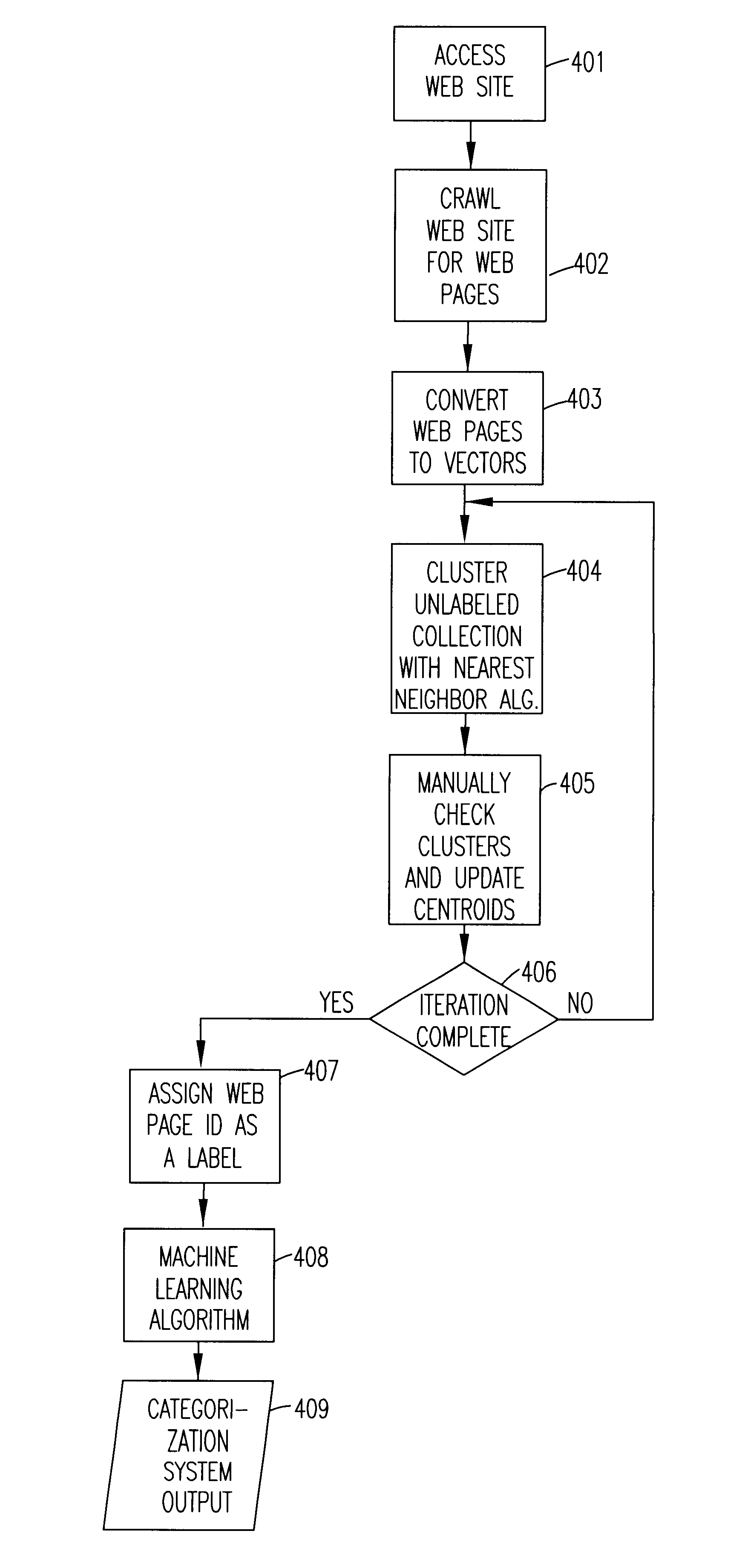Automatic labeling of unlabeled text data
a text data and labeling technology, applied in the field of automatic labeling of unlabeled text data, can solve the problems of inability to completely automate and expensive manual labor for labeling such text documents
- Summary
- Abstract
- Description
- Claims
- Application Information
AI Technical Summary
Problems solved by technology
Method used
Image
Examples
Embodiment Construction
Referring now to the drawings, and more particularly to FIG. 1, there is shown the basic process of automated labeling of unlabeled text data according to the invention. In this example, it is assumed that the answers are Web pages identified by URLs. The process begins by accessing a Web site in function block 101. Then in function block 102, the Web site is crawled to generate a set of responses (i.e., Web pages). This set of responses are a set of Web pages. The Web pages (answers) are converted to vectors (the centroids) by any known method in function block 103. Auxiliary unlabeled documents (e-mails, scanned facsimile transmissions or letters, outputs of a speech recognition process, e.g., calls, and the like) are clustered with respect to the centroids by any nearest neighbor algorithm in function block 104. Labels are assigned in function block 105.
FIG. 2 builds on this basic process to develop a categorizer. Beginning at connector 1 in FIG. 1, a supervised machine learning ...
PUM
 Login to View More
Login to View More Abstract
Description
Claims
Application Information
 Login to View More
Login to View More - R&D
- Intellectual Property
- Life Sciences
- Materials
- Tech Scout
- Unparalleled Data Quality
- Higher Quality Content
- 60% Fewer Hallucinations
Browse by: Latest US Patents, China's latest patents, Technical Efficacy Thesaurus, Application Domain, Technology Topic, Popular Technical Reports.
© 2025 PatSnap. All rights reserved.Legal|Privacy policy|Modern Slavery Act Transparency Statement|Sitemap|About US| Contact US: help@patsnap.com



